Volume of Fluid (VOF), Package for Advanced, Part 2, 10 Learning Products
Original price was: $1,740.00.$193.00Current price is: $193.00. Student Discount
This CFD training package is prepared for ADVANCED users of ANSYS Fluent software in the Multi-phase Volume of Fluid (VOF) area, including 10 practical exercises.
Click on Add To Cart and obtain the Geometry file, Mesh file, and a Comprehensive ANSYS Fluent Training Video.To Order Your Project or benefit from a CFD consultation, contact our experts via email ([email protected]), online support tab, or WhatsApp at +44 7443 197273.
There are some Free Products to check our service quality.
If you want the training video in another language instead of English, ask it via [email protected] after you buy the product.
Description
Multi-phase Volume of Fluid (VOF) CFD Simulation Package, ANSYS Fluent Training for ADVANCED Users (Part-II)
This CFD training package is prepared for ADVANCED users of ANSYS Fluent software in the Multi-phase Volume of Fluid (VOF) area, including 10 practical exercises. You will learn and obtain comprehensive training on how to simulate projects. The achieved knowledge will enable you to choose the most appropriate modeling approaches and methods for applications and CFD simulations.
Sloshing
Experimental and numerical studies show the importance of the effect of fluid sloshing within the tank on the maneuverability of floating devices like ships, boats, and so on. In project number 1, we simulate a sloshing fluid inside a tank.
In project number 2, the rotation of a cube containing water and air is. The interaction of water and air inside the cube is modeled using the Volume of Fluid (VOF) multi-phase approach. This project investigates the simplified sloshing effect in fluid containers where a situation similar to the one studied here can occur due to the acceleration of the carrier vehicle. A User Defined Function (UDF) defines the variable angular velocity of the cube’s rotation.
Cavitation (Volume Of Fluid)
The cavitation phenomenon occurs when the pressure of a liquid falls below its vapor pressure at a constant temperature. In this case, the particles turn from liquid to vapor and form a bubble. Therefore, one of the most important issues in the industry is to investigate the possibility of cavitation inside the pumps and solutions to reduce it. So in project number 3, another fluid is defined as diesel vapor with a density equal to 9.4 kg.m-3 and a viscosity equal to 0.000007, and also the multi-phase VOF model is used.
The inducer can increase the inlet pressure to the pump impellers and improve the pump’s suction performance. One of the most important phenomena that should be considered in pumps is the phenomenon of cavitation. One of the essential reasons inducers are used in pumps is to reduce cavitation. In project number 4, the fluid flow of water and the cavitation phenomenon around an inducer inside a pipe is simulated.
Mixing Tank
In project number 5, Side Entry Mixing Tank in Different RPMs has been simulated. This has been done by the CFD numerical simulation method by Ansys Fluent software. A mixing tank has been simulated. The mixing process is essential in many industries. Side mixing blades are used to prevent these events because in most positions, due to space limitations, the blade can not enter the tank from above. This simulation is performed with the mesh motion method at different rotational speeds of 400 and 900 and 1400 rpm.
Solar Desalination (Volume Of Fluid)
In project number 6, the surface evaporation process in a 2D solar desalination system is simulated and analyzed. In this process, the surface of the fluid water will receive the warmth of solar rays, then, based on the principles of surface evaporation, the water molecules on the surface of the water will start to evaporate. A UDF was used to determine the phase change method. The VOF multi-phase model for three phases of air, water vapor, and water fluid has investigated the phase interactions.
Dam
Project number 7 simulates the effect of an Earthquake on a dam. A computational area is designed around a dam with water and air currents to perform this simulation. Therefore, a multi-phase model of VOF (volume of fluid) has been used to define two air and water flows. Using Region Production and the Patch tool, water flow can be separated from the initial airflow. The Frame Motion technique is used to define the earthquake process So by using a UDF to determine the type of movement and displacement of the computational area.
Water surface
In project number 8, the flow inside an open channel which has a 180-degree bend, with a side outlet is investigated. The Multi-phase Volume of Fluid (VOF) model is activated to simulate two water and air phases inside the canal. The water enters the canal with a mass flow rate of 45Kg/s and in the middle of the bent section, the obstacles will reduce the flow pressure and guide a portion of entered water to the side outlet for irrigation of a farm.
In project number 9, an attempt has been made to investigate the effect of the movement of a Jet Ski on the border of two fluids (water and air interface). The computational domain consists of an inlet wherein the water enters with a mass flow rate of 50000Kg/s and a pressure outlet. The multi-phase VOF model is activated for solving multi-phase flow equations and the standard k-epsilon model is exploited to account for the turbulence in fluid flows.
In project number 10, Two cubes falling into the liquid are simulated, in this tutorial. In general, it is essential to study the motion of objects in liquids. The fall of the cubes due to the acceleration of gravity helps a lot to understand the phenomenon of sloshing. Sloshing occurs when a partially filled reservoir with fluid is subjected to permanent or transient external forces.
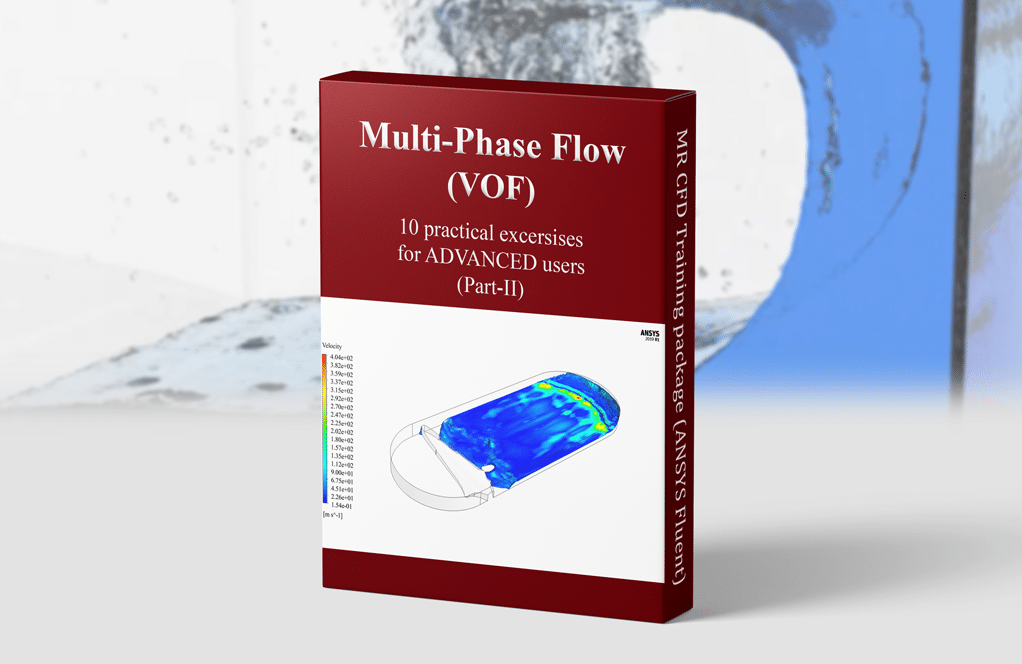
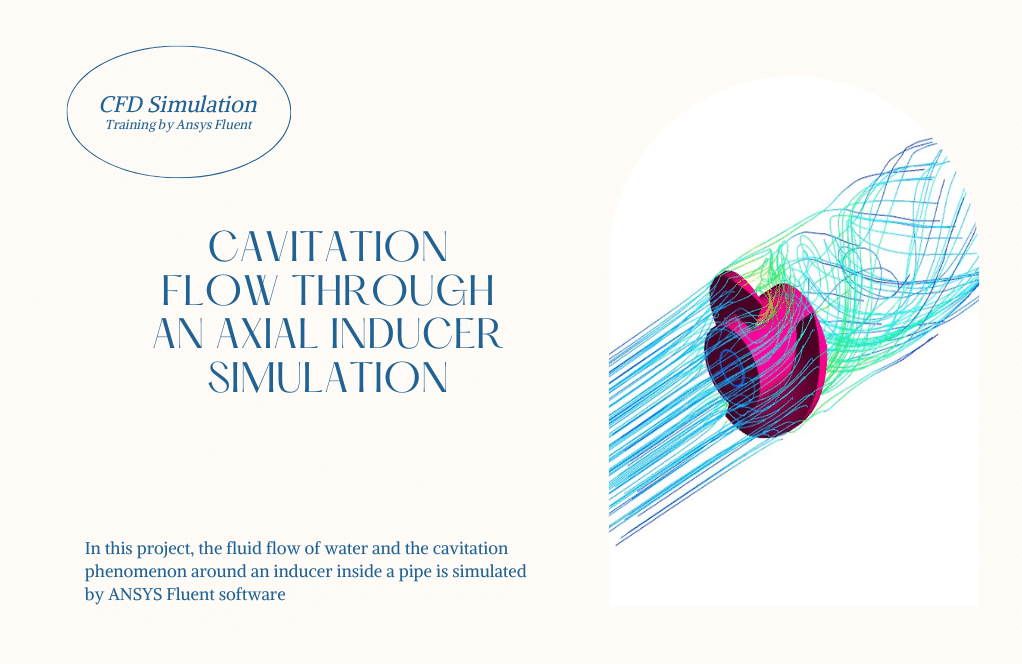
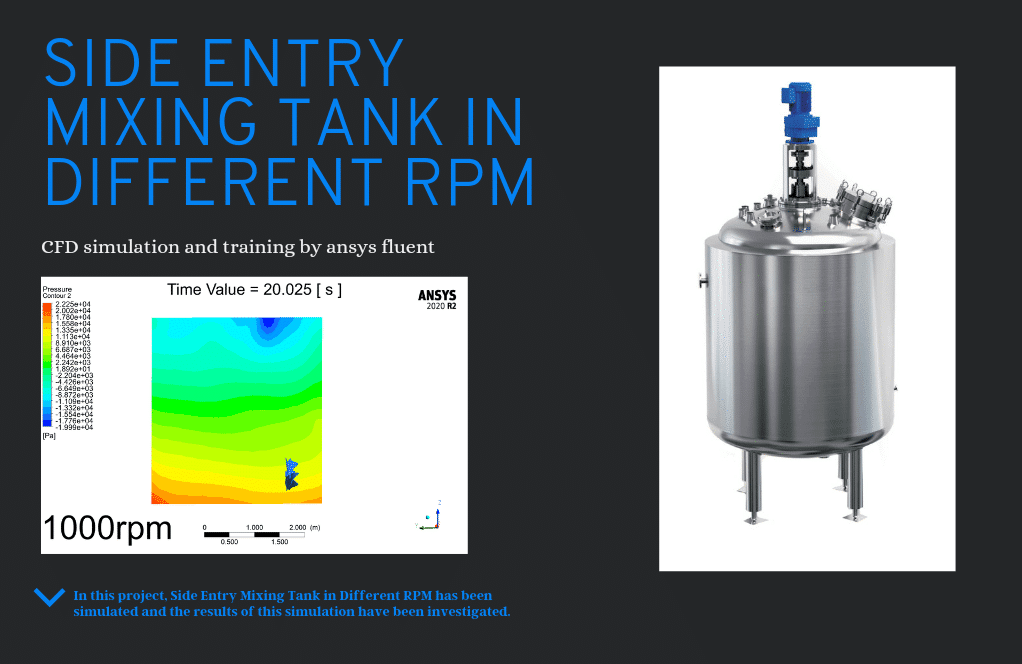

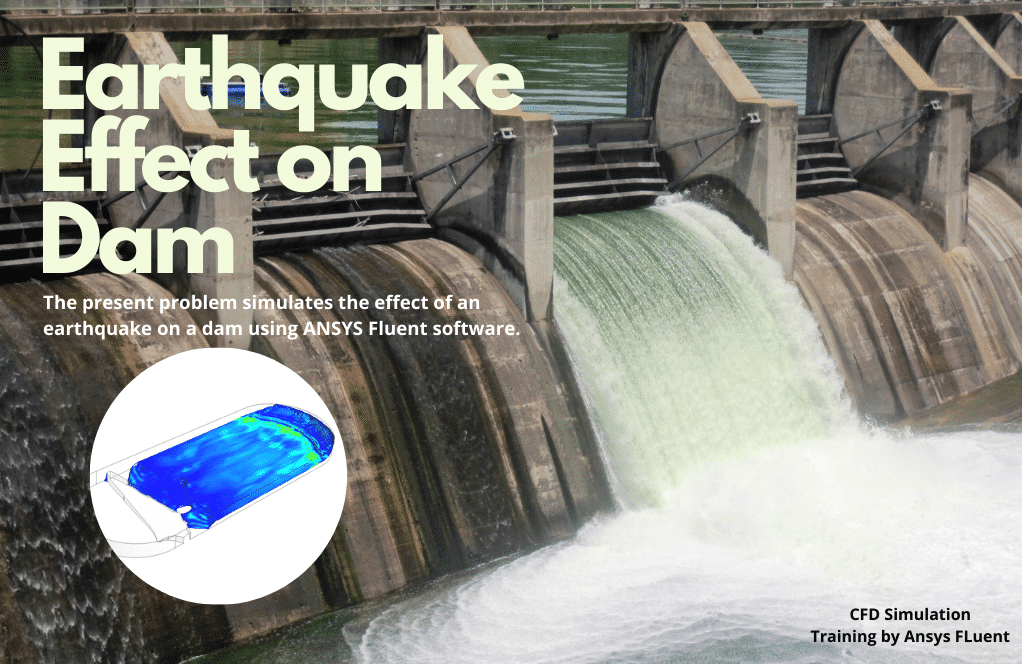
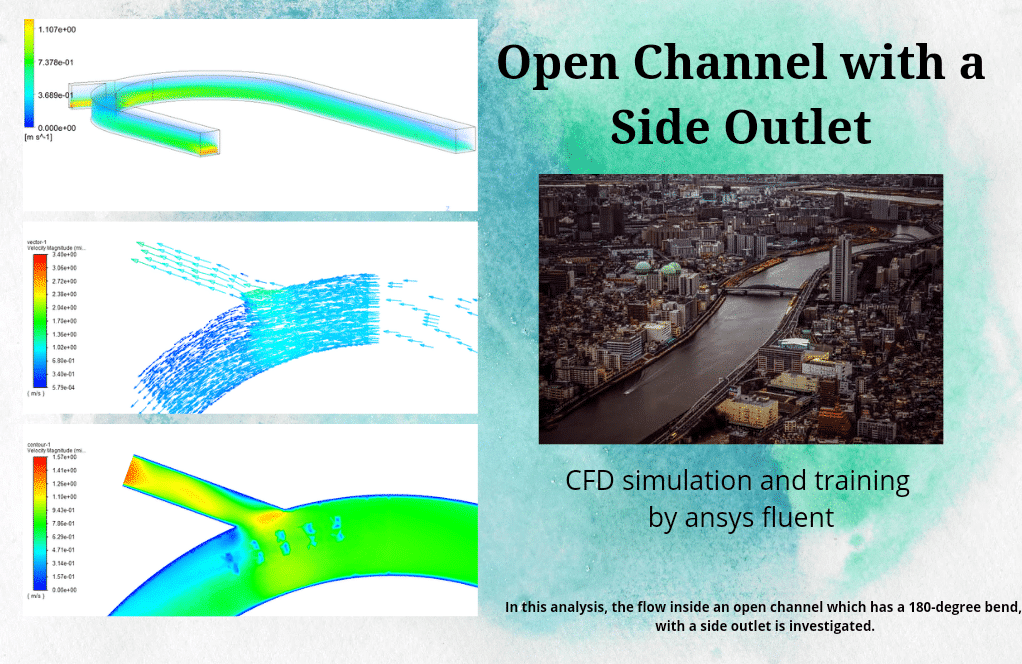

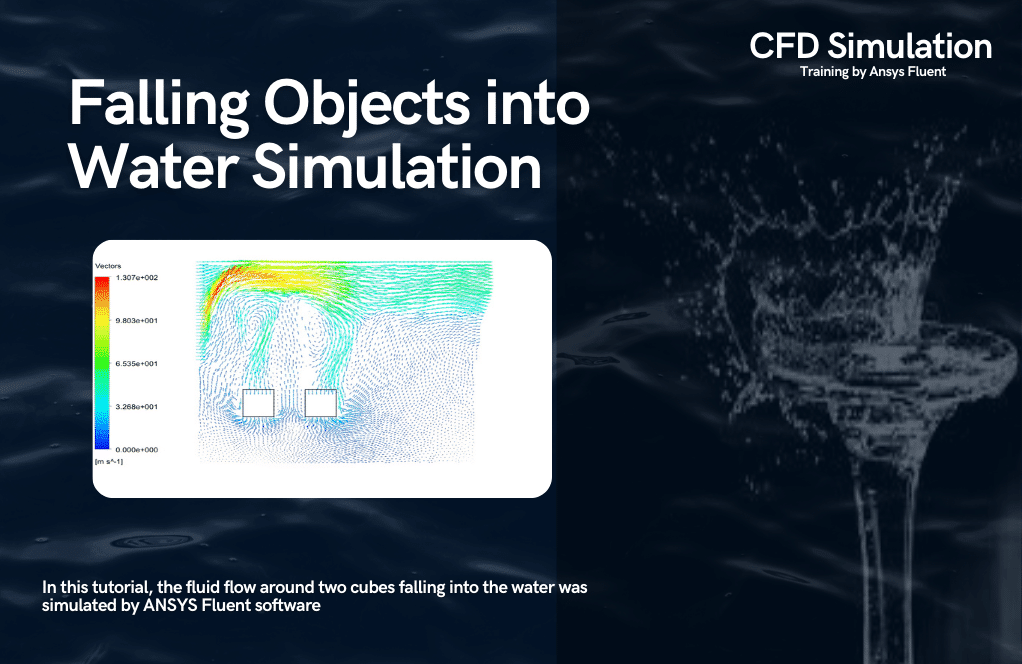



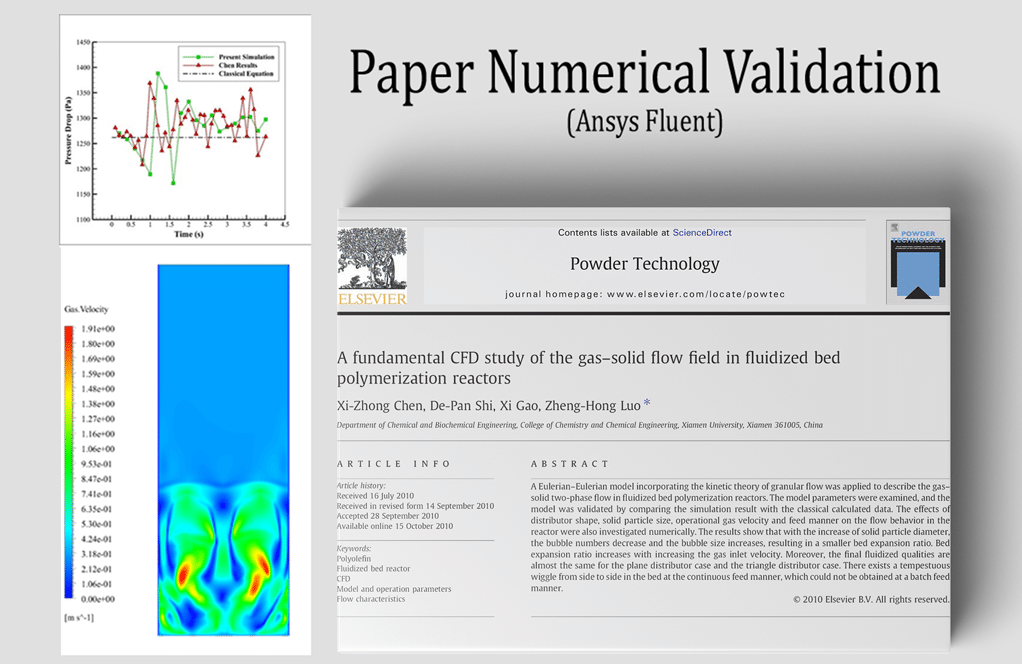

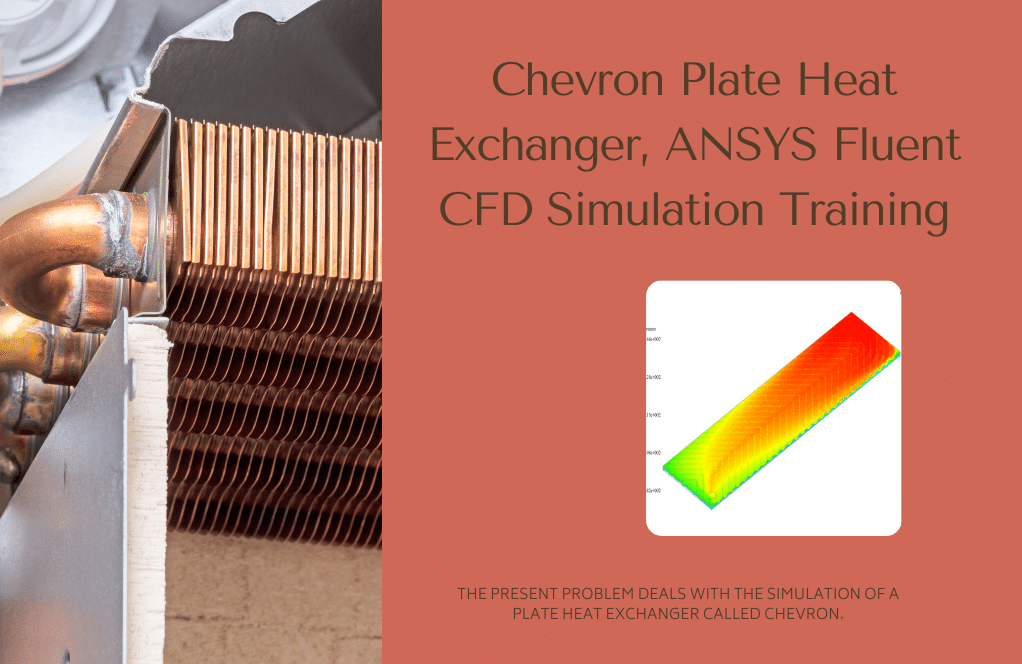
Marge Balistreri –
This package of advanced VOF simulations by MR CFD was a deep dive into the complexities of multiphase flows. Every project provided a clear application of the VOF method, from sloshing in tanks to simulating cavitation in pumps. I appreciated the varied settings, like the mixing tank simulating different RPMs, and the solar desalination system showcasing how evaporation can be captured in a model. The earthquake effect on dams and jet ski water dynamics were particularly impressive. The instructions for these projects were clear, and my understanding of dynamic meshing and UDF application grew substantially!
MR CFD Support –
Thank you for your positive feedback! We’re thrilled to hear that our Advanced VOF Simulation package has significantly enhanced your understanding of complex multiphase flows and their applications. At MR CFD, we strive to provide comprehensive and clear instruction so that our users can tackle challenging simulations with confidence. We look forward to supporting your continuing growth in CFD mastery!
Grace Veum –
I’m thrilled with the extensive variety of simulations covered in this advanced VOF package. Each project offered new insights and the UDF utilizations for phase change and dynamic meshing showcased the software’s capabilities also the inclusion of real-world applications like cavitation in pumps and earthquake impact on dams has boosted my confidence in handling complex multi-phase problems. Truly a fantastic learning tool!
MR CFD Support –
We’re ecstatic that our Volume of Fluid (VOF) package for Advanced users has enriched your CFD experience and appreciative of your kind words! It’s always our goal to provide comprehensive and practical learning materials that enhance our customers’ capabilities. Your satisfaction is what drives us to keep improving. Thank you for taking the time to leave such a positive review!
Dr. Colby Heathcote –
I just wanted to compliment the Volume of Fluid (VOF), Package for Advanced, Part 2. The application of the VOF model on various complex multiphase projects is explained with such clarity. I especially appreciated how project 3 covered cavitation and inducers which is incredibly relevant to my field. Well-structured and comprehensive!
MR CFD Support –
Thank you for your kind review! We are thrilled to hear that our Volume of Fluid (VOF) Package for Advanced users could assist you, and that project 3 was particularly beneficial for your field of work. We always aim to provide clear and comprehensive training, so it’s great to see it’s appreciated.
Camila Christiansen –
The materials in the VOF Package for Advanced were incredibly helpful. The variety of simulations, from sloshing in tanks to cavitation in pumps, solar desalination and dam response to earthquakes, are so diverse yet well-covered. I feel much more proficient in using ANSYS Fluent for multi-phase flow problems. The UDF components were particularly useful.
MR CFD Support –
We are thrilled to hear that our Volume of Fluid (VOF) Package for Advanced users has been so beneficial to you! We always strive to cover a wide range of simulations to provide a comprehensive learning experience. Your positive feedback on the UDF components and diversity of simulations confirms that we are on the right track. If you ever have any further inquiries or need assistance with future projects, do not hesitate to contact us. Thank you for choosing our training materials.
Aurelie Steuber –
I just completed the advanced VOF ANSYS Fluent training, and I’ve seen a noticeable improvement in my CFD simulation skills. Projects like the sloshing in tanks, cavitation in pumps, mixing tank behaviors, solar desalination processes, dam under earthquake conditions, open channel flows, and the dynamics of cubes falling into liquid were superbly structured. The UDF utilization for phase change and Frame Motion technique for earthquake simulation were real game changers for me. I appreciated the thoughtful choice of diverse and complex simulations that challenged and developed my understanding of multiphase flows.
MR CFD Support –
We’re really glad to hear that our Volume of Fluid (VOF) training for advanced users expanded your knowledge and expertise in CFD simulations. It’s alway. rewarding to know when our projects give valuable, applicable skills to our users. Thank you for sharing your experience, and we wish you great success in applying these skills to future complex simulations!
Miss Wava Reynolds DDS –
The comprehensive coverage of VOF simulations in a variety of applications is truly impressive. The practical examples ensure that users not only grasp the theoretical concepts but can also apply them skillfully. Especially effective is the exploratory approach to sloshing dynamics in different containers, which is critical for understanding fluid behavior in moving vehicles.
MR CFD Support –
Thank you for your thoughtful feedback! We are thrilled to hear that our Volume of Fluid (VOF) training package for advanced users has met your expectations. It’s great that you found the practical exercises and the exploratory approach helpful for both understanding and application of the concepts to real-world scenarios. We appreciate your appreciation for the depth and breadth of the simulations covered. Your success is our success, and we look forward to providing you with more valuable learning experiences!
Sheldon Borer –
I was impressed by the variety of applications covered in the VOF package for advanced users. The topics ranging from sloshing in moving vehicles to cavitation in pumps provide a thorough understanding of fluid dynamics in different situations. The inclusion of real-world phenomena like solar desalination and dam behavior during earthquakes adds to the practical value of this learning suite. The detailed explanations and the step-by-step approach to tackling complex multi-phase problems in ANSYS Fluent are commendable.
MR CFD Support –
Thank you for your positive feedback on our Volume of Fluid (VOF) training package. We’re thrilled to hear that the range of topics and real-life applications met your expectations and provided you with valuable insights into fluid dynamics challenges. It’s wonderful to know that our efforts to create a practical, comprehensive learning experience are appreciated. If you ever need more guidance or wish to expand your skills even further, we are here to help!
Bret Casper –
This Advanced VOF training package works wonders. I followed project 3 and was impressed by how authentically the software predicts cavitation. The UDFs were crucial for achieving realistic conditions. Incredible learning tools!
MR CFD Support –
We’re thrilled to hear that you found our VOF training package for advanced users so beneficial and that the cavitation simulation exceeded your expectations. It’s wonderful that the UDFs helped you achieve the desired realism in your project. Thank you for your positive feedback!
Mrs. Avis Graham –
The material walks through a spectrum of applications. I found each example offered useful insights into VOF simulations, complementing my existing knowledge base magnificently!
MR CFD Support –
We greatly appreciate your positive feedback! It’s fantastic to know our Volume of Fluid learning package aided in broadening your understanding of VOF simulations. Thank you for choosing our products, and if you have more queries or need further assistance, please let us know.
Prof. Carson Baumbach DDS –
The simulations in the package appear comprehensive. Have the exercises been validated against experimental data to ensure accuracy?
MR CFD Support –
Our learning packages are curated with detailed analysis and are generally validated. However, we advise our users to cross-reference with experimental data where possible for the utmost precision.
Addison Heidenreich –
This VOF package is incredibly well-structured and comprehensive. It goes beyond basic training with advanced practical exercises that really drive the understanding of multiphase flows and their simulation. I’ve become much more proficient with ANSYS Fluent’s dynamic conditions and appreciate the real-world applications presented in the examples.
MR CFD Support –
Thank you for your positive feedback on our Volume of Fluid (VOF) Package for Advanced users. We are glad to hear that you found the exercises comprehensive and helpful in gaining a deeper understanding of multiphase flow simulations with ANSYS Fluent. If you ever have more questions or need further assistance, our team is here to support your continued learning journey.
Lou Wehner –
The Advanced VOF package covers such a diverse range of multiphase flow scenarios. How easy was it to follow the tutorials and apply the knowledge to similar but distinct simulations?
MR CFD Support –
We’re thrilled to hear that you’ve explored multiple projects with the Advanced VOF package! Our goal is to provide clear and detailed explanations for each scenario, enabling you to grasp the key concepts and apply them effectively in new situations. If you have any specific topics or simulations you wish to replicate, do reach out for guidance, ensuring you can transition your skills seamlessly to other applications.
Tad Padberg II –
Project number 5 was extremely impactful for me! Seeing how the mixing process was studied with different RPMs provided a depth of understanding I was looking for in industrial applications. The insightful results and the explanation of the effects of rotational speed variation are definitely something I will leverage in my work!
MR CFD Support –
We are delighted to hear that our Side Entry Mixing Tank project met your expectations and provided valuable insights! It’s great to know that the RPM variations and their effects on the tank mixing process will benefit your work. Thank you for taking the time to share your experience with us.
Fabian Russel II –
Part 2 of this VOF training package promises a comprehensive learning experience. I especially appreciate the diverse set of simulations that range from sloshing in tanks to dam earthquake impact analysis. Such a variety is fantastic for us hands-on learners!
MR CFD Support –
Thank you for your valuable feedback! We’re delighted to hear that our ANSYS Fluent training package for ADVANCED users, focusing on multi-phase Volume of Fluid simulations, meets your expectations for diverse and practical learning content. Our goal is to facilitate a thorough understanding through a wide range of real-world applications.
Laron Mosciski Sr. –
I have recently finished the VOF Advanced Package Part 2 from MR CFD and cannot begin to express the depth and clarity of understanding I’ve gained from these exercises. The projects covered a diverse set of scenarios that put my skills to the test, and the inclusion of UDFs in several simulations enhanced my ability to tackle real-world challenges. The balance between theory and practice was perfectly struck!
MR CFD Support –
We’re thrilled to hear that our Volume of Fluid (VOF), Package for Advanced, Part 2 has met your learning needs and provided a balance of theory and practical application! Your success and satisfaction with the training are our primary goals. Thank you for choosing MR CFD, and we hope we continue to support your CFD journey with further learning products!
Dan Hand –
I recently completed the ‘Volume of Fluid (VOF), Package for Advanced, Part 2’ course. I am thoroughly impressed with the structured approach of the 10 practical exercises. It significantly leveled up my understanding of fluid simulations and multiphase flows. I particularly appreciated the realistic examples such as the sloshing tank and the dam earthquake simulation, which gave me insights into industry-relevant modelling. I must commend the use of UDF in guiding phase changes and the mesh motion method; these advanced topics were made easy to grasp. Great job on creating such a comprehensive and advanced training package!
MR CFD Support –
We’re delighted to hear that the ‘Volume of Fluid (VOF), Package for Advanced, Part 2’ course has had such a positive impact on your understanding of CFD simulations with ANSYS Fluent, particularly in multi-phase flows and industry-relevant applications. Thank you so much for sharing your experience and for recognizing the value in our practical exercises and advanced training methods. Your appreciation is very encouraging, and we look forward to providing you with more quality learning material in the future!
Malachi Champlin –
I found the training package for advanced ANSYS Fluent users to be very insightful. It provided a deep dive into the VOF model and offered practical examples that enriched my learning experience.
MR CFD Support –
Thank you for your kind words! We’re delighted to hear that our training package met your expectations and efficiently enhanced your understanding of the VOF model in ANSYS Fluent. We always strive to provide comprehensive and practical examples to aid our users in mastering CFD simulations. If you have any more questions or require further assistance, feel free to reach out.
Delphine Bechtelar –
Thank you for this comprehensive ADVANCED training package on VOF simulations! The practical exercises were challenging but extremely rewarding. I especially enjoyed the sloshing and mixing tank projects—they provided a deep understanding of how to handle complex fluid dynamics problems.
MR CFD Support –
Thank you for taking the time to leave such a positive review! We’re thrilled to hear that you found the practical exercises challenging and rewarding. It’s fantastic knowing that the sloshing and mixing tank projects added significant value to your understanding of complex fluid dynamics. We appreciate your feedback and are delighted to have you as a satisfied learner.